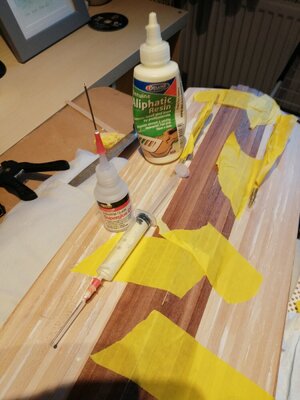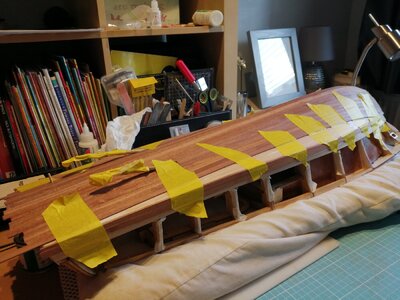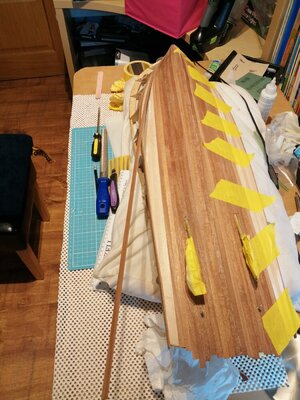I got the Occre Albatross, started the second planking yesterday Got about 1/2 done using contact cement.
Today I went to check my work, only to find air bubbles, slits and cracked wood. UGH. I realized that this is unacceptable to me and i have to do it over again.
I have laid about 5 thousand square feet of Formica, or so it seems, so I know when the glue is ready, and how to apply it.
Any ideas as to what caused it?
Also, my gut feeling is to replace with thicker wood.
Thoughts please,
Steven
Today I went to check my work, only to find air bubbles, slits and cracked wood. UGH. I realized that this is unacceptable to me and i have to do it over again.
I have laid about 5 thousand square feet of Formica, or so it seems, so I know when the glue is ready, and how to apply it.
Any ideas as to what caused it?
Also, my gut feeling is to replace with thicker wood.
Thoughts please,
Steven










